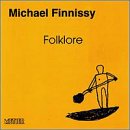| All Artists: Michael Finnissy Title: Folklore Members Wishing: 1 Total Copies: 0 Label: Metier Release Date: 10/1/1999 Genre: Classical Styles: Chamber Music, Historical Periods, Classical (c.1770-1830) Number of Discs: 1 SwapaCD Credits: 1 UPCs: 519140201029, 675754049621 |
Search - Michael Finnissy :: Folklore
 | Michael Finnissy Folklore Genre: Classical
|
Larger Image |
CD Details |
CD ReviewsAn infinity of humanities traces scarecrow | Chicago, Illinois United States | 07/22/2001 (5 out of 5 stars) "Folklore is actually a four part work written in 1993-1994,there's an introductory remark borrowed from Antonio Gramsci who himself had surveyed the potential of civic traditions to working class ones in Mussolini's Italy while imprisoned for life. To refer to this work as epic is a somewhat of a mistatement,it is far more than that for Finnissy had fashioned, has shaped and designed a veritable musical mural of the world. Mural is also a wrong metaphor or an inadequate one. Compositionally as well Folklore represents an end point, a summation of many prior folklorish manipulations of materials from various cultures. Here is included Folklore #2. The most apparent impetus here is the timbral complexity Finnissy had appraised with Scottish bagpiping or piobaireachd,each utilizing ornamentations from those strains as Haen, Hinbare, Hodrodin.This work progresses as fragments tied together within Finnissey's complexly rich pianistic language. The timbral reality for the piano becomes saturated,if this is your first encounter with this high level of the pianistic complex, But stick with it for a time, and after prolonged hearings,these durationas become commonplace. Yet there is a rich lyrical melodic fascination here,which is immediate, and renders the highly complex pianistic configurations a sense of lyrical directedness with thread bare lines, There is also reference to Cornelius Cardew's work for two pianos "A Book of Studies for Two Pianists" a work exhibiting another rich display of high ornamentations framed within a proportional notational-like complexity. Finnissy in a kinda of heartfelt inlaid,overlaid hommage to Cardew, incorporates grace notes, it is a kind of "traces", "fragments" for or of the dead.In many ways Finnissey has closed partially the political odyssey began by Cardew in England of the utilzation folk musical materials, as a means of creating an unpretencious alternative musical culture for the toiling classes. This especially with his ongoing inclusion of folk materials reflecting the embattled cultures,fighting to preserve their cultures in many ways, as the Kurds, Bulgarian, and other Eastern European cultures. There is also sparce beauty in a work after the impressions of Azerbaijanian folk music. No direct quote from a song of "Terekkeme" written in 1981 was a first attempt "Svatovac" as well modeled after the Macedonian melos is even an earlier exploration written in 1973-1974. The Australian Sea Shanty Set 2 is another long journey here. Finnissey has other sets not all for piano solo utilizing this image he garnered from a residency there,viewing the seemingly primitive aspirations,the somatic feel of the earthy images from seated comfortably aboard British Airways. There as well is more personal inclusions here dedicated to Finnissey's lover in "how dear to me", "Willow, willow" and, "My love is like a red red rose". The music hear has a sparce beauty again,proclaiming itself around a few ornamented tones,deeply committed."
|

 Track Listings (10) - Disc #1
Track Listings (10) - Disc #1